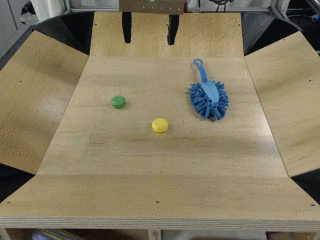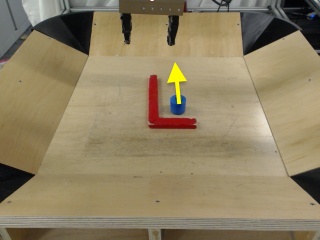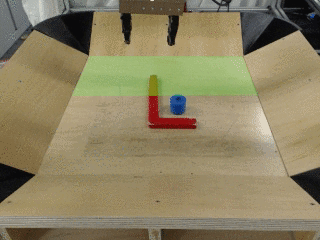American scientists have taught robots to use auxiliary tools

The monkey (chimpanzee) pulls out the termites from the mound using a stick. In the second photo, the gorilla uses a stick to pick the grass she needs.
Developers from the United States created a specialized algorithm for robots , which enabled the latter to use additional tools to perform the task. And it is relatively simple - in a certain way to move the object from point A to point B.
The algorithm consists of two parts. The first allows the robot to move objects at random, performing a kind of experiments. The second part makes it possible to assess the consequences of a particular action using a neural network. As it turned out, the robots, working on the algorithm, effectively used the auxiliary tools without training.

')



A person uses many additional tools every day. Animals are also capable of it - parrots, crows, monkeys and some other living creatures are able to use sticks, pebbles, spines to achieve their desired tasks (for example, extracting a beetle larva from under the bark).
For us, the use of a knife for cutting bread is quite obvious. But for the robot, which needs to explain every action in the form of machine language - not at all.


Scientists from the University of California at Berkeley have developed a way to teach robots to use auxiliary tools and make decisions on their use in a given situation. The algorithm "visualizes" the task, demonstrating to the robot which way to move the example. And already the robot (this is the usual robotic manipulator) takes the tool and moves the object. All movements are tracked on the camera.

The algorithm is based on the neural network. A specialized program calculates different sequences of actions for the robot that are “fed” to the neural network. That generates a video that shows what will happen as a result of the execution of an action.
The manipulator is given the command to perform the action. If the actual result coincides with the planned result, the task is counted. In the course of work, various variants of the video are compared with an image that is provided by the user and displays the final result of the task. After the optimal sequence of actions has been found, the robot proceeds to solve the problem.


This project combines machine learning approaches such as non-demonstration learning and simulation learning . In the first case, the robot selects options for action at random. As a result, a significant data sample is generated, which helps to achieve optimal results. In the second, the developers clearly showed the robot how to use the tool in one way or another. It is in this situation that the reference solution is recorded on the camera, with which the robot compares the consequences of its actions.
In some cases, the robot "understands" that it is best to complete the task without auxiliary elements - and does so. Tools are used without training, even if the robot did not show them before.


Source: https://habr.com/ru/post/448068/
All Articles